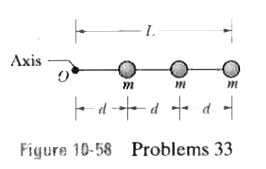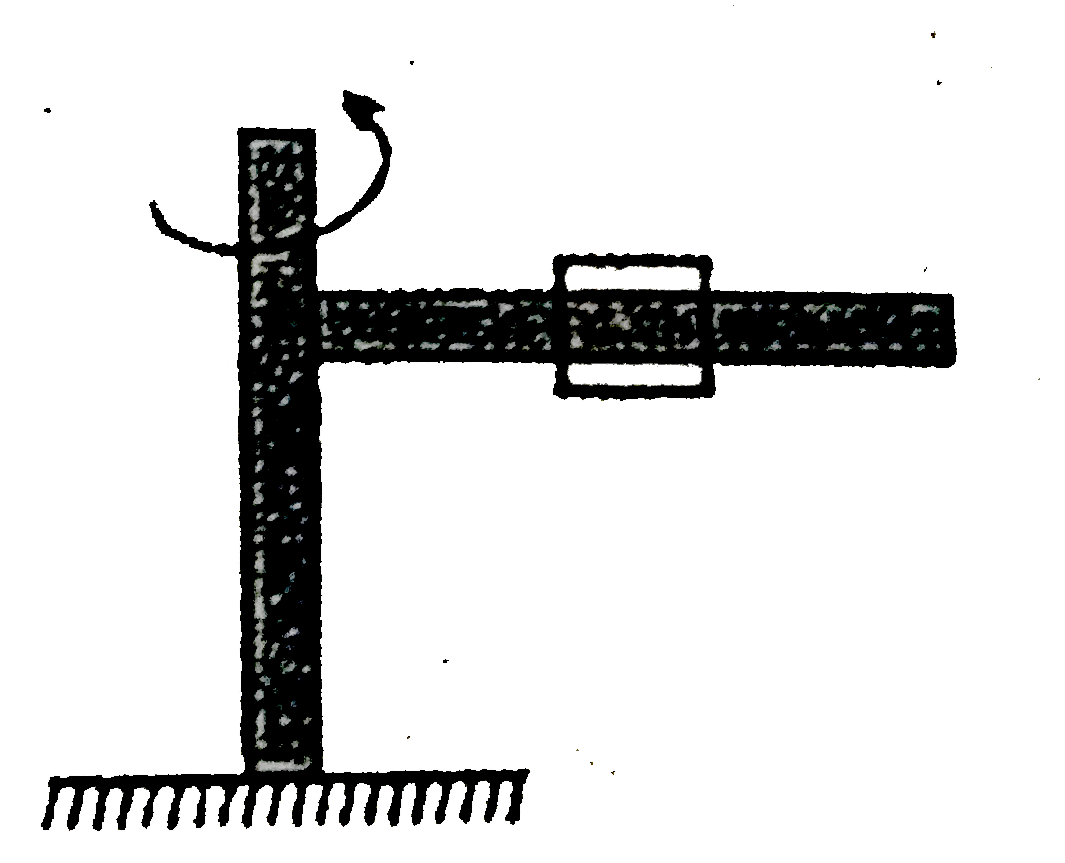The cervical vertebra called axis provids head with sideways rotation. This can be because
It is articulated to skull through occipital condyles
it is fused with 1st vertebra atlas
it is joined through elastic pads of fibrocartilage with other vertebrae, which provide mobility
it contains odontoid process that fits into the odontoid canal of atlas.
The correct Answer is:D
Axis (second cervical vertebra) has a peg like process called odontoid process that first into odontoid canal of atlas (first cervical vertebra).
Topper's Solved these Questions
Similar Questions
Find out the correct option w.r.t. cervical vertebrae
A. The seventh cervical vertebra is ring like, lacks centrum and neural canal.
B. In all mammals, number of cervical vertebrae are seven.
C. In case of humans, first, second and seventh cervical vertebrae are atypical.
D. In humans, the atlas rotates on the odontoid peg ' of the axis.View SolutionFigure 10-58 shows three 0.0100 kg particles that have been glued to a rod of length L = 8.00 cm and negligible mass. The assembly can rotate around a perpendicular axis through point O at the left end. If we remove one particle (that is, 33% of the mass), by what percentage does the rotational inertia of the assembly around the rotation axis decrease when that removed particle is (a) the inner-most one and (b) the outermost one?
 View Solution
View Solution
Knowledge Check
- Question 1 - Select One
Cervical vertebrae can be distinguished from other vertebrea on the basis of
AOdontoid processesBTransverse processesCAmphiplatyan centrumDVertebra-arterial canals - Question 2 - Select One
In human being g, the second cervical vertebra helps in rotatory movements of head through knowb-like process called :
APrezygapohysisBPostzygapolysisCPostzygapohysisDOdontoid process - Question 3 - Select One
A rod can rotate in a horizontal plane about its one end. A bead which can move along the rod is placed at certain distance from the axis or rotation. The bead does not to friction. The rod has a constant angular acceleration
 Athe normal reaction on the bead will be constant h magnitude and direction bothBthe magnitude of the normal reaction on the bead will be variableCthe magnitude of friction force on the bead will be constantDthe magnitude of friction force on the bead will be variable
Athe normal reaction on the bead will be constant h magnitude and direction bothBthe magnitude of the normal reaction on the bead will be variableCthe magnitude of friction force on the bead will be constantDthe magnitude of friction force on the bead will be variable
Experience shows that a body irradiated with light with circular polarization acquires a torque. This happens because such a light possesses an angular momentum whose flow density in vacuum is equal to M=I/ω, where I is the intensity o flight, ω is the angualr oscillation frequacny. Suppose light with circualr polarization and wavelength λ=0.70μm falls normally on a uniform black disc of mass m=10mg which can freely rotate about its axis. How soon will its angualr velocity become equal to ω0=1.0rad/s provided I=10W/cm2?
View SolutionAir, water and minerals are called____ resources because they are provided by nature and cannot be produced by human beings.
View SolutionD(+) Glucose has melting point 146∘C and specific rotation [α]C6(25) is +122∘C. Another D(+) Glucose has melting 150∘C and specific rotation [α]25D is +18.7∘C. The two form have significantly different optical rotation but when an aqueous solution of either form is allowed to stand, it rotation changes. The specific rotation of one form decrease and rotation of other increases until both solution show the same value +52.7∘. The change in rotation towards an equilibrium value is called mutarotation.

For mannose the mutarotation can be shown in brief as follow:
 View Solution
View SolutionThe vertical plane containing the longitude circle and the axis of rotation of the Earth is called the
View SolutionAssertion :− Mass and energy are not conserved separately,but are conserved as a single entity called 'mass energy'.
Reason :− This is because one can be obtained at the cost of the other as per Einstein's equation.View Solution

